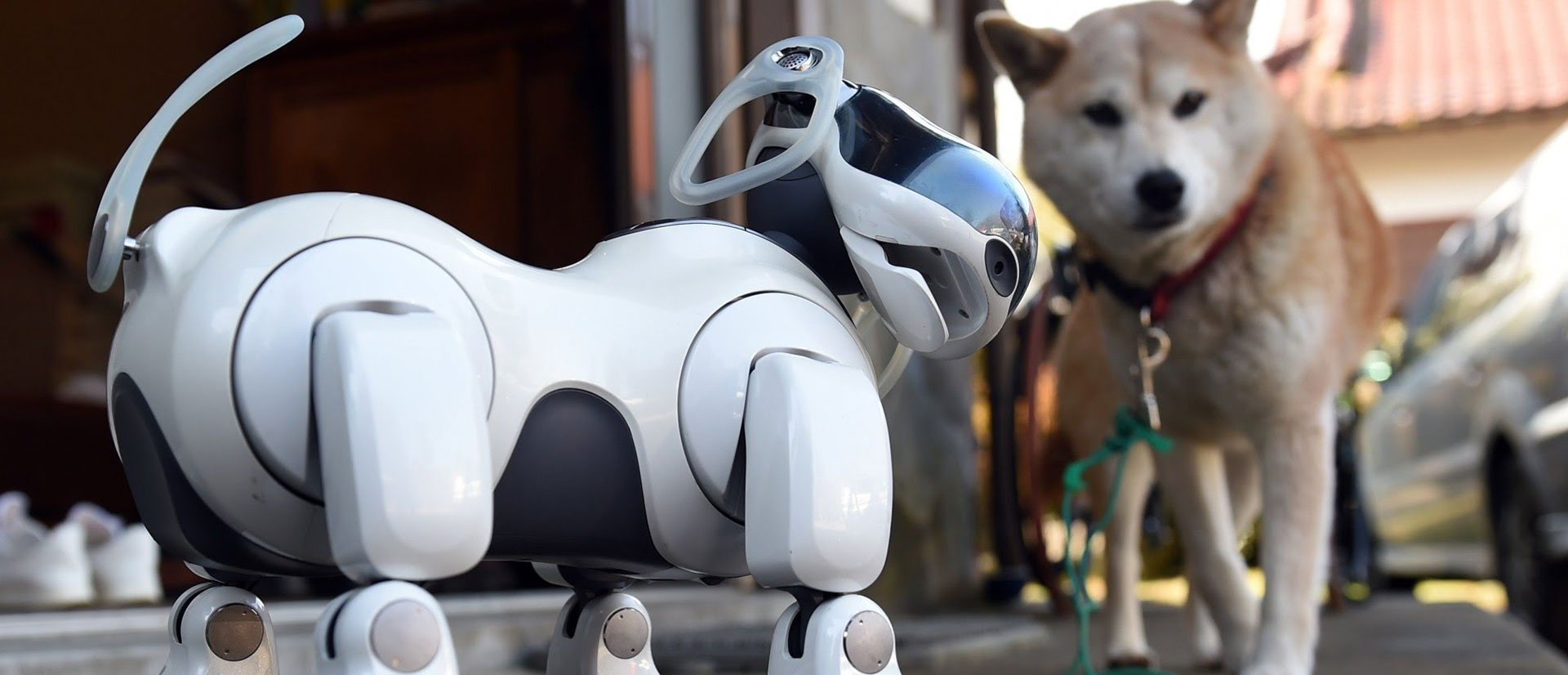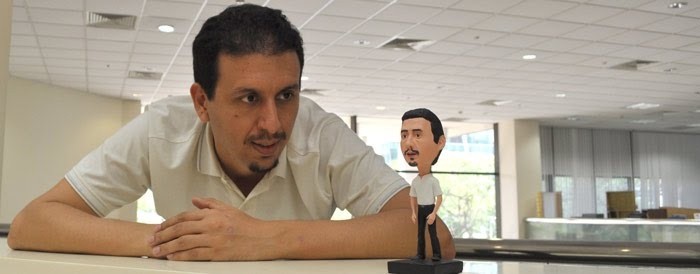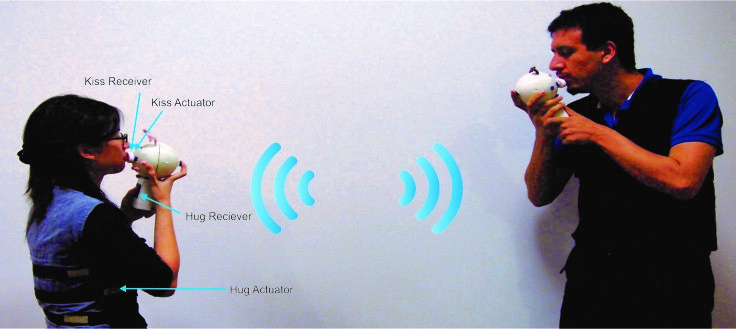Pets are meant to provide their owners with companionship and emotional support.The intimate bond between human and pet (dog) dates back to 32,000 years, based on DNA research on similar genes. Dogs have strong brain responses to the smell of familiar humans and to emotional cues in their verbal speech.Radical advances in Robotics technology/AI, increasing urbanization of the planet and the craving for tech based entertainment elements have driven the demand for robotic pets.
Owners may opt for robot pets (includes dogs, cats, seals, dinosaurs etc) for various reasons:
- Allergic to live pets
- Scarcity of living space
- Scared of real animals
- Unable to afford the expenses on water, food, medicines etc
- Certain apartment complexes where live pets are not allowed by law
- For matters of social status or fancy
- As pets for children
AIBO the robotic dog was treated by children, as if it was a living dog. AIBO by Sony was launched in 1999 and discontinued in 2014.Sony is launching the next version of AIBO in 2018 as there is a demand from children and even children who distinguish animals and machines.
In Homes for the disadvantaged the inmates can feel happier moments when a pet robot makes its routine morning and evening rounds.
Therapeutic Benefits of Pet Robots:
PARO- The robot seal is used in hospitals and patient care centers. Studies have shown that interacting with animals can ease symptoms associated with post-traumatic stress disorder, depression, Alzheimer’s and can also reduce everything from blood pressure to cholesterol to feelings of loneliness and can keep elderly people alert and active with the company they provide.
Pleo-The robot dinosaur more effectively facilitated speech for children with Autism Spectrum Disorder (ASD)
Current pet robots have no ‘active’ participation in the communication process with humans –no engagement in Human Robot Interaction (HRI) and use the ‘traditional’ human-computer interfaces, direct or remote, such as keyboard, mouse or joystick and at most with programmed/low level AI discrete responses.
Some Other Robot Pets Available:
- LEA helps people to lead an active life, helps with daily routines ensures safety and ease of communication
- SOTA- A “social dialogue” robot
- iPAL- A friendly companion for children to play with and talk to in a natural manner
- BUDDY- A companion robot that protects the home, offers assistance, entertains and interfaces with smart home solutions
- JIBO -Helps adults to manage their life, helps seniors to live with greater independence and is a playmate for children
- ZENBO- Your smart little companion
- FURO-i Create closer family relationships. A connection to home devices and a companion for the family
Future robots will be engaged in Human-Robot Interactions (HRI) using ‘natural’ interfaces, such as speech, facial expressions and body language, thanks to the ongoing research in a related field called ‘Lovotics‘–a research field in the relationship between humans and robots. This is an extremely challenging, multidisciplinary research field utilizing fundamentals concepts from ; robotics, artificial intelligence, philosophy, psychology, biology, anthropology, neuroscience, social science, computer science and engineering.
The novel advanced artificial intelligence based Affective (relating to moods, feelings, and attitudes) system model is similar to that of a human and comprises of three modules of affective relationships between humans and robots.In the model, the Lovotics robot is an active participant in the communication process and adjusts itself depending on inputs and feedback from the human in long term.
Three Modules of Lovotics-Parameters under consideration. (Human’s internal adjustment model)
- Physiology –Proximity, similarity, attachment, reciprocal liking, satisfaction, attraction etc.
(Adjusts its internal hormonal levels)
- Psychology- Blood glucose, body temperature and appetite, etc.
(Adjusts its internal probabilistic love parameters)
- Emotions and state of the mind- Facial expressions, voice, gesture, etc.
(Adjusts its internal affective states of mind)
Interfacing of emotions is an area of special interest in the development of the future robot.Researchers have overcome considerable technological challenges and successfully evolved three initial applications, till now, en route to the final goal of building an emotional ’human’ like robot pet who engages and interacts like a human and with humans.
Kissenger, Mini-Surrogate and XOXO are the three applications projects evolved out of Lovotics.
The word ‘kiss’ ,in these contexts, should be understood in a broader sense, as an occasion /event to establish a two way, mediated and interactive communication channel/process of emotions-through touch, reciprocation, response – which is the ultimate goal of developing a ‘human’ like robot pet.
A. Kissenger –Kissing Messenger (Tele Kissing)
Kissenger robots can transfer kisses (tele-kissing) over a distance. These robots thus act as a physical interface in the interaction with the help of digital communication media and advanced robotic technology.
Kissenger enables three modes of interaction:
- Human to Human (tele-kiss). The interaction is done using 2 robots. Humans can kiss each other through the robots.
- Human to Robot kiss (tele-kiss).Human and robot can exchange kisses at a distance.
- Human to Virtual character (virtual kiss). Here the robot establishes a link between the real and the virtual worlds. Humans can kiss and receive kisses from virtual characters
B. Mini-Surrogate
In this project miniature size robots interface with humans who are present nearby and helps study the various parameters of interpersonal communication.
C. Real-time Kiss & Hug Transmitter
XOXO system includes the robots and special wearable ‘hug reproducing jackets’ .In the interaction between two persons, the kissing feel is provided by the robots and the effect of hugging is delivered through the jackets.
Future work will also focus on implementing the proposed model into a physical social robot to perform guidance tasks with human users. The successful development of a vision module that enables a robot pet to recognize its master’s facial expression and respond appropriately will also open vast avenues for other functional robots of the future. The ultimate goal is to build an emotional ’human’ like robot pet who engages and interacts like a human and with humans. Emotions can facilitate natural two way communication between human and robots.
“Laugh, and the world laughs with you; weep, and you weep alone”.
‘Solitude’- Ella Wheeler Wilcox
Prospective owners are eagerly awaiting the future pet robot who will share their emotions. Seems thrilling as of now! Yet, one will have to wait for over two decades to establish with ‘human’ like robot pets, our shared history of the emotional human connect and bonding with live pets. Humans are susceptible to rage, craze, fancy and new technology (Cell phones, for example). These will be the key drivers, likewise, for the adoption of robot pets worldwide.
Get Automated
Applications of robotic automation are already in place in every industry. The time is “Now”! Get started right away with our customized product and service based solutions.
Embrace the future. Contact us to save your time and money to deliver a quality product.
Sources:
https://phys.org/news/2013-05-dogs-domesticated-earlier-thought.html#jCp
https://www.thedailybeast.com/in-the-future-well-love-our-robot-pets-but-will-they-love-us-back





Ishihara Kasumi
April 18, 2018There is much to consider in the future of technology, but I rather fear too little is made of the very basic, even essential part of life which seems to get largely overlooked, and that is in the production of food. With even minimal population growth it is patently obvious that we need technological developments to improve crop production, gathering and distribution. We need to move away from live animals for protein, as even on an humanitarian level animal production is an inefficient, and non-economically viable resource for the future. Bio-technology and physical technologies should concentrate on these areas, and not be so concerned about factories producing more products. Food and food supply involves us all, and is a basic need.
Sastra
May 25, 2018Thanks for your comment, We are also concerned about the same.
Check out our latest blog about how robotics would help agriculture development and crops production!